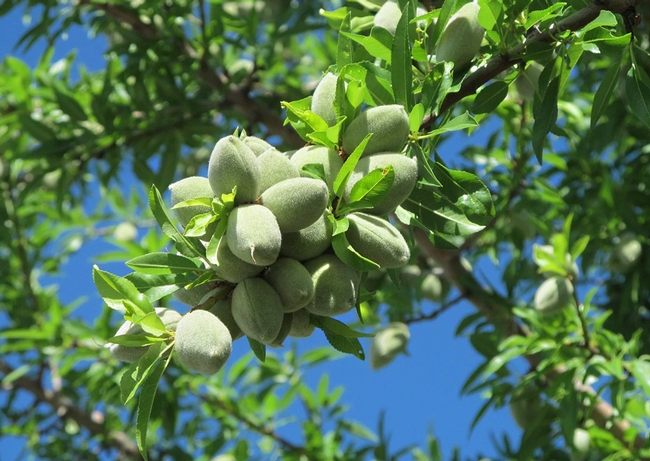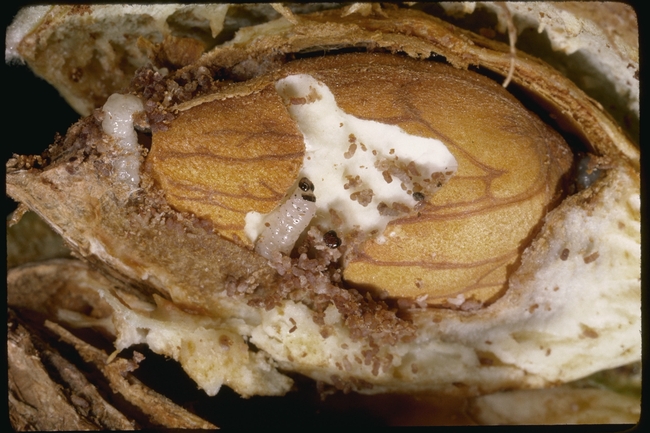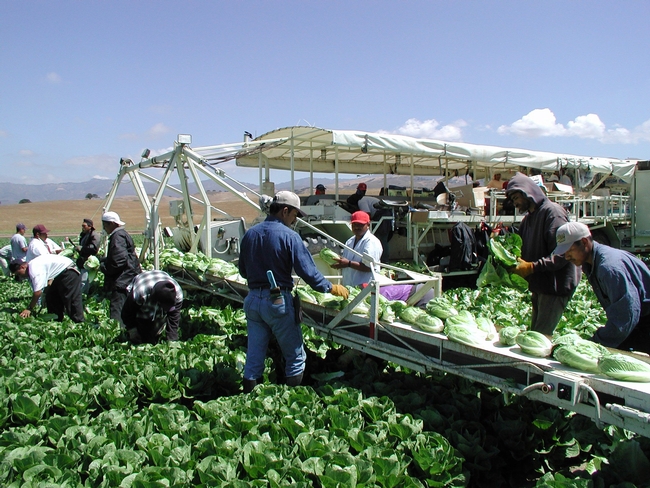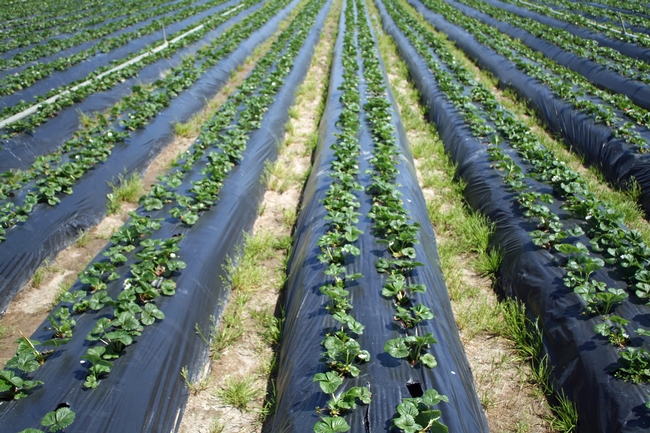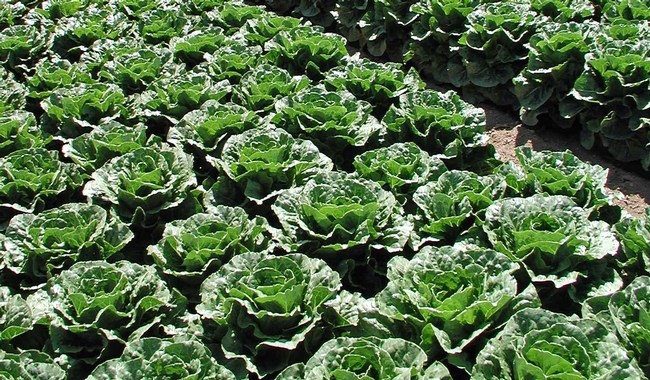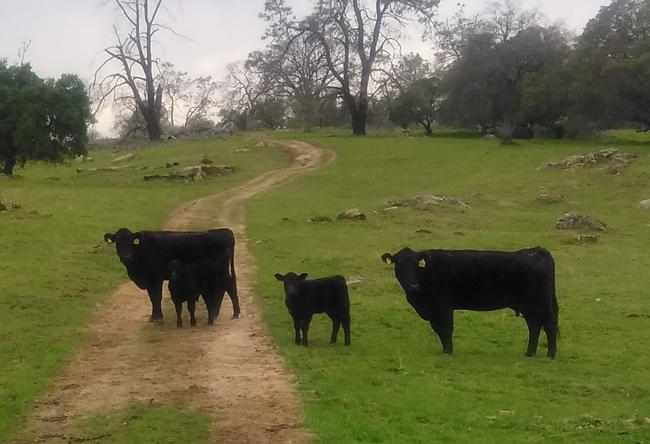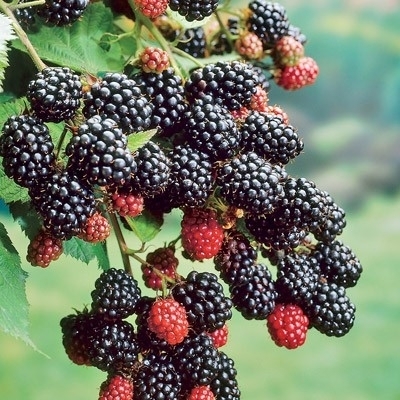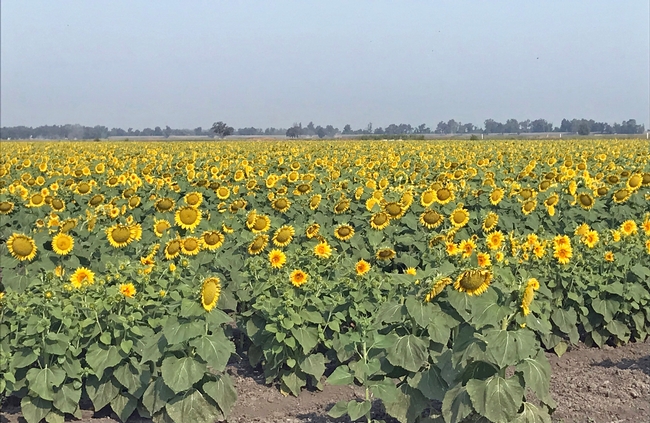- Author: Pamela Kan-Rice
UC Agricultural Issues Center has released new studies estimating the cost and returns of establishing an almond orchard and producing almonds for three growing regions of California.
“These cost studies are valuable for agricultural producers all along the continuum – growers considering entering into a new crop production business, less experienced growers, and those with decades of experience,” said Emily Symmes, UC Cooperative Extension integrated pest management advisor for the Sacramento Valley. “The information in these cost studies allows growers to evaluate their production practices and associated costs relative to an exemplary hypothetical orchard specific to their geographic region, and can help with development of business models, crop insurance and lending.”
In 2018, almonds ranked third among California commodities with almond growers receiving nearly $5.5 billion in cash receipts.
The cost analyses are based on hypothetical farming operations of well-managed almond orchards, using cultural practices common to the region. Local growers, UC Cooperative Extension farm advisors and supporting agricultural representatives provided input and reviewed the methods and findings of the studies.
“The recent almond updates for the Sacramento and San Joaquin valleys reflect costs associated with the continually evolving conditions facing agriculture,” said Symmes, who co-authored the almond cost studies. “Some of the notable updates include labor, irrigation and pest management costs – all integral to producing and delivering a high-quality crop.”
The researchers based one study in the Sacramento Valley, one in the northern San Joaquin Valley and the other in the southern San Joaquin Valley.
The southern SJV study is based on an orchard that uses double-line drip irrigation, whereas the other two locations use microsprinkler irrigation. All are multi-year studies, estimating costs from removal of the previous orchard, through almond orchard re-establishment and the production years. The economic life of the orchards used in these analyses is 23 to 25 years.
Navel orangeworm (NOW) is a major pest in almond production; Symmes and her co-authors describe in detail the pesticide applications and winter sanitation methods for each location for NOW control and include the costs.
The authors describe the assumptions used to identify current costs for orchard establishment, almond production, material inputs, cash and non-cash overhead. A ranging analysis table shows net returns over a range of prices and yields.
The new studies are titled:
- Sample Costs to Establish an Orchard and Produce Almonds in the Sacramento Valley - 2019
- Sample Costs to Establish an Orchard and Produce Almonds in the Northern San Joaquin Valley - 2019
- Sample Costs to Establish an Orchard and Produce Almonds in the Southern San Joaquin Valley - 2019
The studies are available for free download at the UC Davis Department of Agricultural and Resource Economics website at http://coststudies.ucdavis.edu. Sample cost of production studies for many other commodities are also available on the website.
For additional information or an explanation of the calculations used in the studies, contact Donald Stewart at the UC Agricultural Issues Center at (530) 752-4651 or destewart@ucdavis.edu. To contact a local UC Cooperative Extension advisor, find the UCCE office in your county at http://ucanr.edu/County_Offices. The Agricultural Issues Center is a statewide program of UC Agriculture and Natural Resources.
- Author: Pamela Kan-Rice
Farmers who are considering growing romaine hearts or organic strawberries in California's Central Coast region can get some help determining whether the crop will pencil out for them.
UC ANR Agricultural Issues Center and UC Cooperative Extension have released sample costs to produce and harvest organic strawberries for fresh market and romaine lettuce hearts in Santa Cruz and Monterey counties.
A major difference between growing strawberries organically and the conventional practice is in weed control.
“Weed management is especially challenging for organic strawberry production because soil fumigation and most herbicides are not allowed under organic regulations,” said Mark Bolda, UC Cooperative Extension farm advisor in Santa Cruz County. “Weeds in furrows between the beds can be mechanically cultivated during the growing season, but most of the weeding will need to be done by hand from December through September.”
The cost analyses are based on hypothetical well-managed farming operations using practices common to the Central Coast region. The costs, materials and practices shown in the studies will not apply to all farms and are intended to assist growers in estimating their own costs.
The organic strawberry study assumes a farm with conventionally grown strawberry transplants planted on 27 contiguous acres of rented land. “Organic strawberry transplants are part of the picture now, but not standard by a long shot,” said Bolda, who co-authored the cost studies. The strawberry crop is harvested by hand and packed into trays containing eight 1-pound clamshells, from April through early October with peak harvest in June and July.
For romaine lettuce for the hearts market, the cost study assumes a farm of 1,500 non-contiguous acres of rented land, with romaine planted on 250 acres and rotated with other lettuce and cool season vegetable crops to assist with pest management and soil fertility. Lettuce is planted continuously from late December to mid-August along the Central Coast. To manage lettuce mosaic virus, Monterey County has a host-free period (December 7 – 21), during which time lettuce may not be planted. In this study, lettuce is planted in January.
For both the organic strawberries and romaine, ranging analysis tables show net profits over a range of prices and yields. Other tables show the monthly cash costs, the costs and returns per acre, hourly equipment costs, and the whole farm annual equipment, investment and business overhead costs. The authors describe the assumptions they used to identify current costs for production material inputs and overhead.
The authors have also expanded the section on labor, which includes information on California's minimum wage and overtime laws.
Growers, UC ANR Cooperative Extension farm advisors and other agricultural associates provided input and reviewed the methods and findings of both studies.
Free copies of these and other sample cost of production studies for many commodities are available. To download the cost studies, visit the UC Davis Department of Agricultural and Resource Economics website at https://coststudies.ucdavis.edu.
For more information about calculations used in the romaine hearts and organic strawberriesstudies, contact the Agricultural Issues Center at (530) 752-4651 or Mark Bolda at UC Cooperative Extension in Santa Cruz County at (831) 763-8025.
The cost and returns studies program is funded by the UC Agricultural Issues Center and UC Cooperative Extension, which are part of the UC Division of Agriculture and Natural Resources, and the UC Davis Department of Agricultural and Resource Economics.
- Author: Pamela Kan-Rice
Among California's agricultural commodities, cattle rank fifth in revenue. The University of California Agriculture and Natural Resources' Agricultural Issues Center has released a new study showing the cost and returns of a beef cattle operation.
“Ranchers can use UC beef-cattle cost studies to guide their production decisions, estimate their own potential revenue, prepare budgets and evaluate production loans,” said Rebecca Ozeran, UC Cooperative Extension livestock and natural resources advisor for Fresno and Madera counties.
The study estimates costs and returns of a representative owner-operated beef cattle operation located on rangeland in the Central San Joaquin Valley and foothills of Madera and Fresno counties. The study describes a 200-head cow-calf operation and includes pasture costs on the basis of the rental per animal unit month.
The analysis is based upon a hypothetical cow-calf operation, where the cattle producer both owns and leases rangeland. The “typical” ranch in the Central San Joaquin Valley is an owner-operated cow-calf operation, often relying on multiple private leases. The operations described represent production practices and materials considered typical of a well-managed ranch in the region.
Input and reviews were provided by ranch operators, UC Cooperative Extension farm advisors and other agricultural associates. The study describes in detail the assumptions used to identify current costs for the cow-calf herd, material inputs, cash and non-cash overhead. The cost calculations in this study are based on economic principles that include all cash costs and overhead costs. The study also includes a “ranging analysis” to show potential net returns over a range of market prices. Other tables show the average costs and revenues, the distribution of monthly costs and revenues over the year, and the annual equipment, investment and business overhead costs.
“In addition to producing meat, cattle play an important role in California's landscape and environment by grazing on vegetation that could fuel wildfire,” Ozeran said. “Ranching therefore has ecological and social impact on rural and fire-prone communities. If we can help ranchers remain economically viable, then we help support local stewardship of productive natural landscapes and contribute to fire resiliency and food security.”
The new study, “Sample Costs for Beef Cattle, Cow-Calf Production - 200 Head Operation, Central San Joaquin Valley - 2019” is authored by Ozeran, Donald Stewart, staff research associate of the University of California Agricultural Issues Center; and Daniel A. Sumner, director of UC Agricultural Issues Center.
This study and other sample cost of production studies for many commodities are available for free download at http://coststudies.ucdavis.edu. The program is supported by UC Agriculture and Natural Resources, including both Agricultural Issues Center and UC Cooperative Extension, and the UC Davis Department of Agricultural and Resource Economics.
For more information, contact Stewart at (530) 752-4651 or destewart@ucdavis.edu. To discuss this study with a local UC Cooperative Extension farm advisor, contact your county UC Cooperative Extension office https://ucanr.edu/About/Locations or contact Rebecca Ozeran at (559) 241-6564 or rkozeran@ucanr.edu.
- Author: Pamela Kan-Rice
The first-ever cost study of primocane-bearing blackberries in California has been published by UC ANR's Agricultural Issues Center and UC Cooperative Extension. With primocane-bearing, growers can extend the blackberry production season.
“What differentiates primocane-bearing blackberry from the traditional floricane-bearing is that it bears fruit in the first year rather than the second,” explained co-author Mark Bolda, UC Cooperative Extension advisor.
“Which, of course, opens a world of opportunity for growers, since they are able to produce fruit in the first year rather than the second as has traditionally been the case,” Bolda said. “That's what makes this study so interesting to us.”
Primocanes are the green, vegetative stalks of the blackberry plant, generally the first-year cane. The second year, they become floricanes, flowering and fruiting.
The study presents sample costs to establish, produce and harvest primocane-bearing blackberries in the Central Coast Region of Santa Cruz, Monterey and San Benito counties.
The analysis is based on a hypothetical well-managed farming operation using practices common to the region. The costs, materials and practices shown in this study will not apply to all farms. Growers, UC ANR Cooperative Extension farm advisors and other agricultural associates provided input and reviewed the methods and findings of the study.
This study assumes a farm operation size of 30 contiguous acres of rented land, with primocane-bearing blackberries for fresh market planted on 15 acres. The crop is hand-harvested and packed into 4.5 pound trays. During the establishment year, there is a four-month harvest – July through August. Primocane blackberries can produce fruit on first-year growth. There is also a four-month harvest for each of the four production years.
The authors describe assumptions in detail and present a table of costs and returns based on those assumptions about production, input materials, prices and yields. A ranging analysis shows the impact on net returns of alternative yields and prices. Other tables show the monthly cash costs, the costs and returns per acre, hourly equipment costs, and the whole farm annual equipment, investment and business overhead costs.
The study also has an expanded section on labor, which includes information on California's new minimum wage and overtime laws.
“This work investigating the economics of a newer cultural system for our area came out of a close collaboration between UCCE academics and area growers,” said Bolda, who serves Santa Cruz, Monterey and San Benito counties, “so the level of detail and accuracy is outstanding.”
Free copies of this study and other sample cost of production studies for many commodities are available. To download the cost studies, visit the UC Davis Department of Agricultural and Resource Economics website at https://coststudies.ucdavis.edu
The cost and returns studies program is funded by the UC Agricultural Issues Center and UC Cooperative Extension, both of which are part of the UC Division of Agriculture and Natural Resources, and the UC Davis Department of Agricultural and Resource Economics.
For additional information or an explanation of the calculations used in the studies, contact the UC Agricultural Issues Center at (530) 752-4651 or UC Cooperative Extension advisors Mark Bolda (831) 763-8025 or Laura Tourte (831) 763-8005 in Santa Cruz County.
- Author: Pamela Kan-Rice
A new study on the costs and returns of producing hybrid sunflower seed in the Sacramento Valley has been released by the UC Agriculture and Natural Resources' Agricultural Issues Center for farmers who are considering growing hybrid sunflower seeds.
“Although the acreage is relatively small – about 50,000 acres in the Sacramento Valley – hybrid sunflower seed is an important crop because California growers produce the seed for planting stock, destined to be planted in many areas around the world for oilseed and confectionary snack food markets,” said Sarah Light, UC Cooperative Extension agronomy advisor and co-author of the cost study.
Authors Rachael Long, Mariano Galla and Light received input and reviews from fellow UC Cooperative Extension farm advisors and agricultural industry cooperators for the study, which is based on a typical farm in the Sacramento Valley producing field and orchard crops.
“One thing new in our cost study is that it's based on a crop that is irrigated with subsurface drip as opposed to flood,” Long said.
The study estimates the cost of hybrid sunflower seed production on 200 acres as part of a row crop rotation, using subsurface drip irrigation. The subsurface drip irrigation tape is replaced every seven years. Annually, 15 percent, or 30 acres, of the subsurface drip tape is replaced.
To avoid cross-pollination with other sunflower varieties, hybrid sunflower seed production requires at least a 1.25-mile field isolation or different planting times. In this study, male sunflower seed is planted in three rows on a single 5-foot bed and female seed is planted in two rows on three 5-foot beds. The field ratio is 25 percent male parent lines to 75 percent female parent lines. With two hives per acre, honey bees are used to cross-pollinate between the parent lines. The male lines are destroyed after pollination to prevent seed contamination of the female lines.
The authors used current production practices to identify costs for the sunflower crop, including material inputs and cash and non-cash overhead. The study includes tables that show profits over a range of prices and net yields, monthly cash costs, costs and returns per acre, hourly equipment costs, and the whole farm annual equipment, investment and business overhead costs.
The new study, “Sample Costs to Produce Sunflowers for Hybrid Seed in the Sacramento Valley – 2018,” can be downloaded for free from the UC Davis Department of Agricultural and Resource Economics website at http://coststudies.ucdavis.edu.
Sample cost of production studies for many other commodities are also available at the website.
For additional information or an explanation of the calculations used in the studies, contact the Agricultural Issues Center at (530) 752-4651 or UC Cooperative Extension advisors Rachael Long at rflong@ucanr.edu, Sarah Light at selight@ucanr.edu, or Mariano Galla at mfgalla@ucanr.edu.

